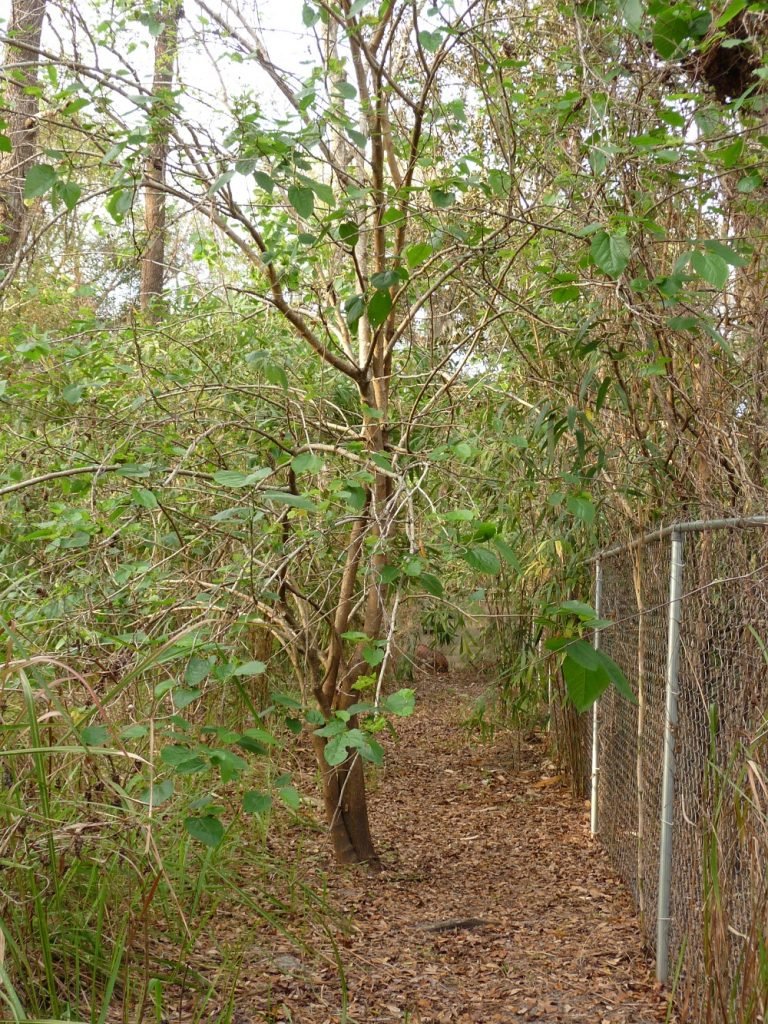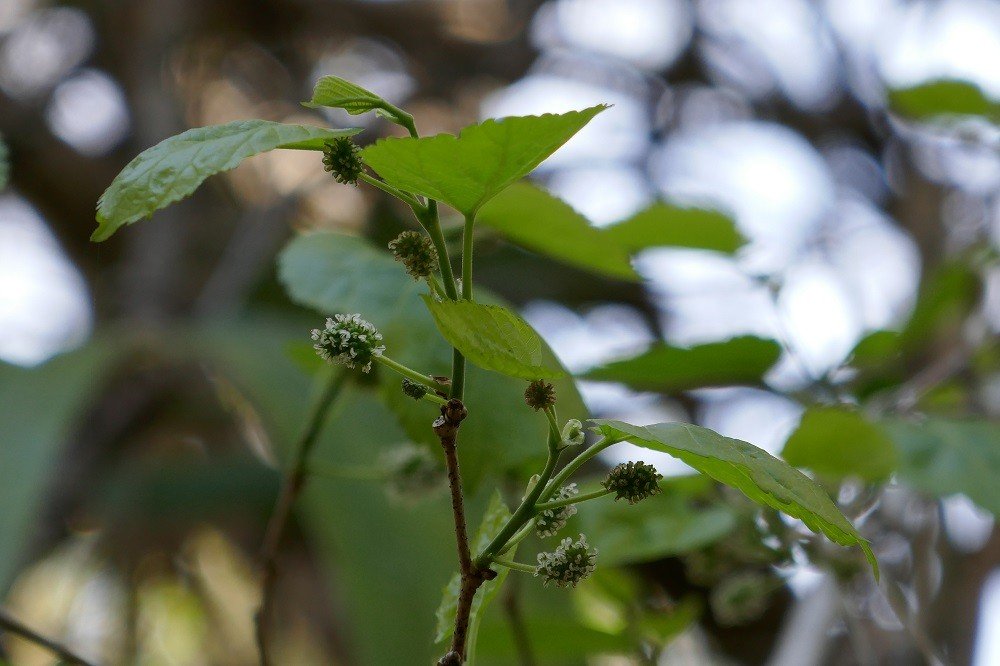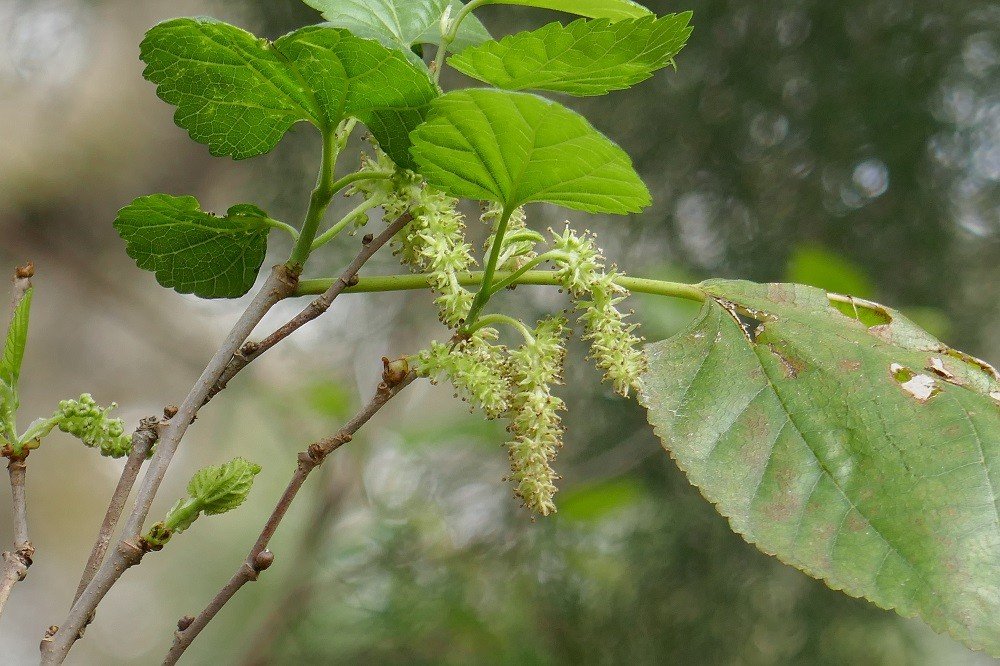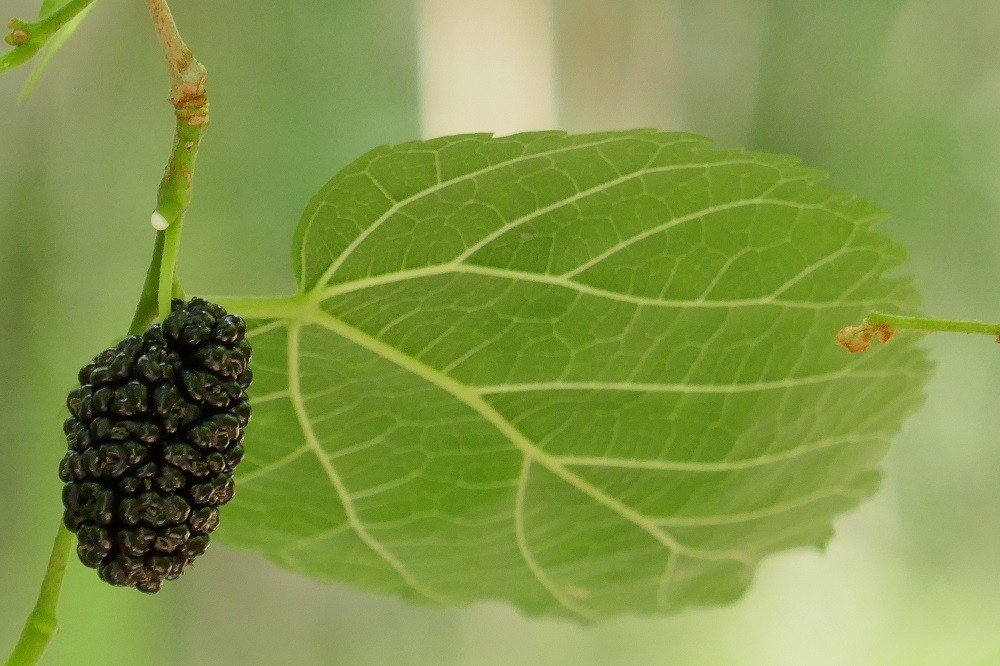Red Mulberry

Red Mulberry (Morus rubra) is in the Moraceae, or mulberry, family.
The red mulberry is a deciduous, dioecious, tree that is native to most of the United States. So it loses its leaves in the winter and male and female flowers are on separate trees.
It grows to a mature height of approximately 40 – 60 feet with a central trunk.
It occurs naturally in mixed woodlands, hammocks, and pinelands.
In the home landscape it grows in part shade to full sun with dry to moist, well drained, soil. It can be planted under larger trees such as live oak, but does best if given its own growing space. It can be grown as an understory tree or as a specimen tree.
The leaves are large and somewhat heart shaped growing from 10 – 20 cm in length. They are alternate with toothed margins. Some leaves may be lobed, but not as severely as the white mulberry and tend to be more mitten shaped when they are found to be lobed.
The red mulberry tree is dioecious and has male and female flowers on separate trees although occurrences of trees with both flowers on one tree have been documented. The male flowers are much longer than the female. The flowers appear in late winter as the leaves begin to emerge. In central Florida red mulberries bloom in late February and early March.


The fruit is an elongated berry that turns from green to red to dark purple when fully ripe. Ripe fruit is delicious and can be eaten out of hand, cooked into jams and jellies, or baked into pies. Red mulberry fruit is prized by wildlife. Wildlife from songbirds to mammals all enjoy red mulberry fruit. For humans the best time to eat red mulberry fruit is when it it fully ripe and a deep, dark, purple. However, wildlife will eat the fruit at most stages.
It is native to AL, AR, CT, DC, DE, FL, GA, IA, IL, IN, KS, KY, LA, MA, MD, MI, MN, MO, MS, NC, NE, NJ, NY, OH, OK, PA, RI, SC, SD, TN, TX, VA, VT, WI, and WV.
Red mulberry grows in zones 5a to 9b.
Propagation is achieved through growing cuttings or transplanting saplings.
The related white mulberry (Morus alba) is native to China and can be extremely invasive creating a monoculture where it grows.
The red mulberry (Morus rubra) is a perfect addition to a wildlife habitat or edible landscape.

Next article: Tough Bully

